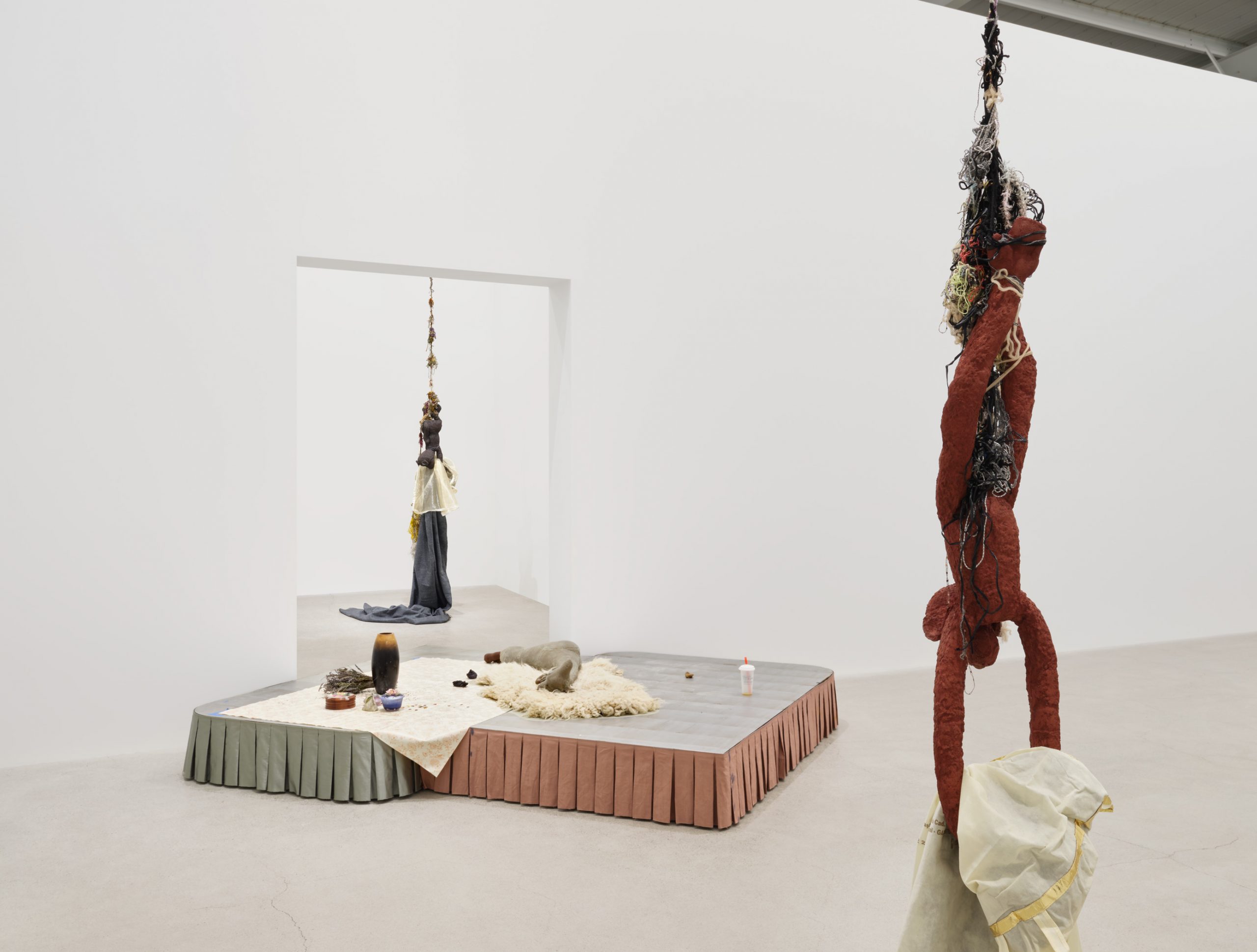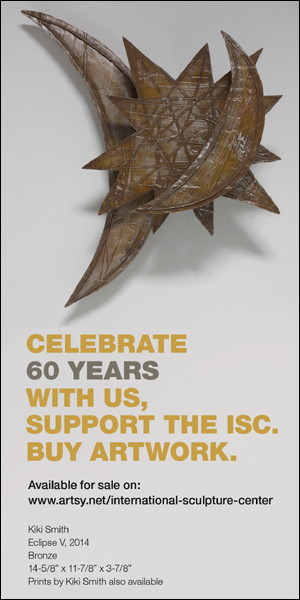Vancouver
Liz Magor’s dramatic installations encapsulate the chaos of our times, piecing together puzzles in which everyday objects enact confounding and disturbing narratives. Born in Winnipeg, Magor has resided in Vancouver most of her life. She speaks fondly of her Vancouver childhood, recalling its seaside harbor as a “wild, cranky, beautiful type of place,” which might also describe the bewitching mix of the beauteous and the abject in her work.
Her recent exhibition, “Downer,” brought together a series of works (all created between 2018 and 2020) that focus their attention on the dynamics of the waste stream. Takeout containers, lids, cardboard boxes, paper bags, rags, and other bits of trash all contribute to Magor’s fractured fables, combined with cast and molded elements, cut and reattached parts. Her concern with “creating an experience for looking” becomes a forceful sculptural intervention in these works, forcing us, the voyeuristic viewers, to examine our association with the stuff we so casually throw away. One could spend hours trying to make sense of her jarring juxtapositions, arranged in ways that make relational causality almost impossible to grasp.
Skillfully constructed, large-scale stuffed animal-type creatures take center stage in Magor’s scenarios. In Delivery (red), a monkey hangs from the ceiling, gripping a garment bag emblazoned with a telephone number from India, apparently strung up by the fabric innards erupting from its body. Is the creature held aloft by its guts? Are we watching its demise moments before it crashes to the ground? The feeling of perplexed investigation (and guilt by association) repeated in the adjoining installations, where animals reclined on bed-like floats, paraded for our fascination. Are they sleeping, as suggested by the numerous blankets, or dead? A tiger’s tail lies disconnected (torn?) from a gray body devoid of stripes, and the flesh of the lion in Coiffed appears a sickly gray, its eyes replaced with blackened holes as if burned from their sockets.
The resting places surrounding Magor’s creatures come with their own disenchantments. A neatly arranged assortment of wrapping materials, thank-you cards, and a disposable cup holder encircles the hapless Shaved tiger on his soiled blanket. On the Coiffed lion’s float, repurposed blankets, jewelry boxes, baubles, and another box with the inscription “Peace N Love 4ever” form a disturbing altar. In Dressed, a giraffe lies egregiously prone, her hind legs stuffed into brown socks, with two other socks scrunched up in balls and tossed behind her body. A shrine of floral decorations intensifies the undertone of violation or sacrifice.
Bits of tape demarcating each vignette underscored the sense of looking at a succession of crime scenes. Dressed blocked the entrance to a second room, so viewers were forced to gaze through the doorway at another hanging monkey, Delivery (brown). Surely we had seen enough already?
The sense of complicity became overwhelming in Migros Shopper. On the entrance wall, positioned like a map, a flattened bag from the retail giant Migros hung upside down, laid over an unfolded box and packing materials. Pastel animal caricatures on the bag proclaim “Easter Will Be So Sweet” in several European languages, while a tiny doll struggles to gain a foothold on a cheerfully decorated projecting ledge. It’s an unforgiving scene—a scathing indictment of the cycle of production and consumption, as well as an acknowledgment of the hapless casualties strewn in the wake of our unthinking behavior. The state of unsettled awareness induced by “Downer” followed one back outside the gallery, where the streets cast renewed focus on the commonplace refuse of a throwaway world: a cup, a wrapper, a bag blowing past an individual sleeping rough on the street.




